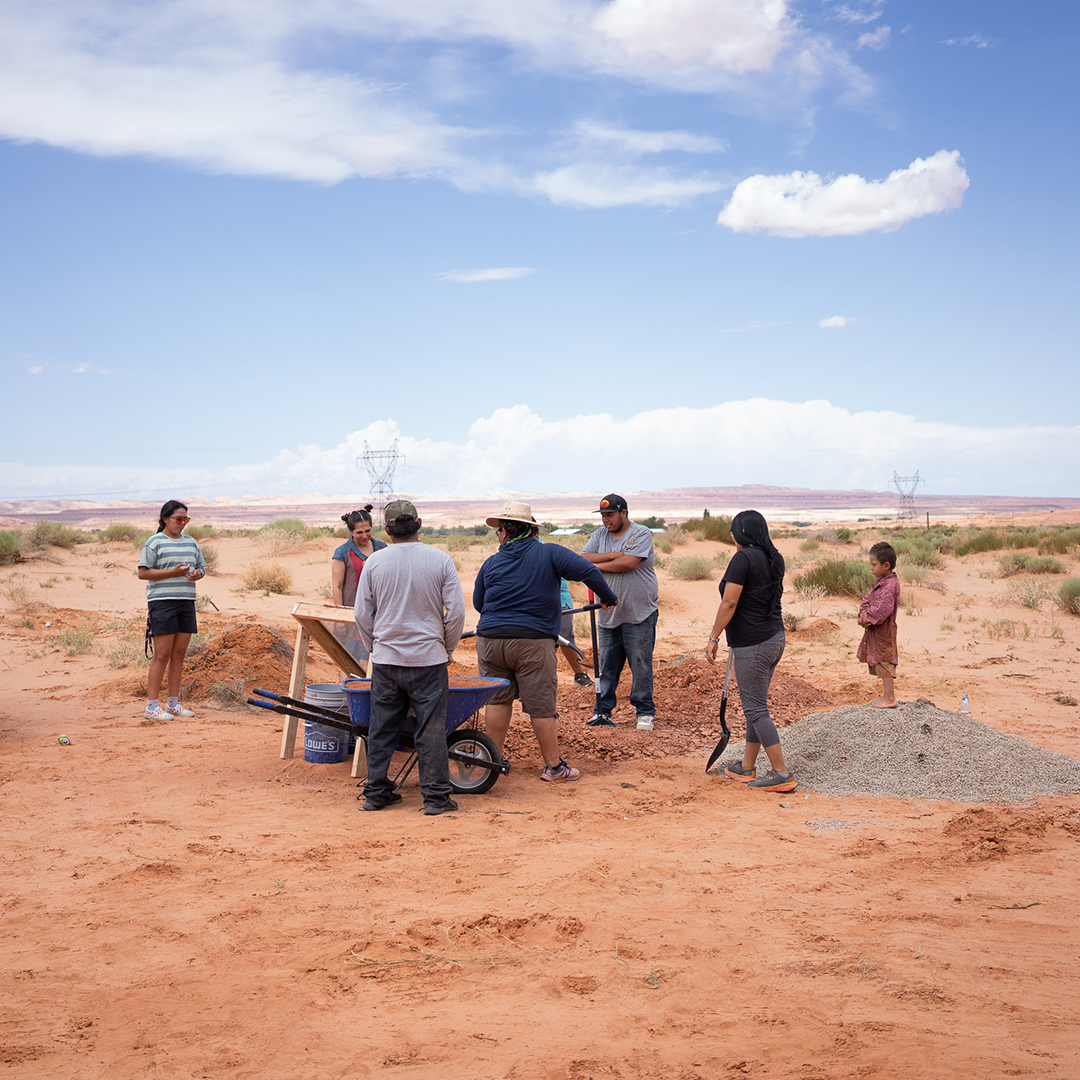
This essay is a set of field notes for a nonprofit called Nááts’íilid Initiative (NI). Nááts’íilid is a Diné/Navajo epistemology of Indigenous sovereignty. This text explores how to turn architecture from an instrument of extraction and exploitation into a resource of healing, remembering and building community in Nihok’aa Diyin Dine’é Bikéyah/Navajo homeland. This turn requires more than goodwill. It requires restructuring the classroom and resituating spaces for teaching and learning. Such structural and spatial reconfiguration is essential to decontaminate our minds from many of the precepts we have internalized during our architectural education, which is calibrated for success in capitalist marketplaces. Nááts’íilid’s projects are labs for testing and revising ideas developed in critical reflection of architectural history and theory. In addition, these projects require working in and with a “working landscape” contaminated by uranium. A “working landscape” forever labors to host human activity, build ethical relations, hold water and space to life, segment minerals and clean air. Our writing goes back and forth between conventional disciplinary discourse and oral storytelling in an effort to set the scene in which our research and practice is embedded. In doing so, we pull published scholars and oral knowledge holders into a conversation and solidarity with one another.
Continue reading:






